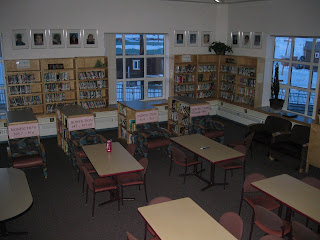
My experience has better prepared me for teaching both rural and urban students. I also feel better prepared to facilitate student transitions from rural to urban Alaska. For one, the dialect of rural villages is quite different from Standard English. Before traveling to Buckland, I might have responded to a student's grammatical "errors" in speech and in writing with an automatic judgment about the student's intelligence. But I learned that this connection would be like presuming a Japanese-speaking student is less intelligent than a Standard English-speaking student - an assumption I wouldn't think to make. My new perspective on rural dialects will help me avoid erroneous assumptions and preconceptions about students. As an English teacher, understanding the background and perspective of Alaska Native students will allow me set high and reasonable expectations, and design or use a plan to encourage student knowledge and manipulation of the English language while acknowledging and supporting language norms from home.
I realize there are many challenges in rural Alaska, not only for the teaching environment but for the living environment as well. The hardest challenge for me in the teaching realm would be the pacing. In my current Geography class I am trying to cover all of the content left for this semester. I am staying with my strict weekly plan to do this. In Buckland, teachers and students would talk about various topics or review yesterday's lesson for the first 10 or 15 minutes of class. The pace was slow, more relaxed, and more informal. Students rearranged desks on their own, were not assigned homework, and had most of the period to work on assignments. I expected the slower pace, and I realized it was kind of nice. I always feel rushed in my classrooms at home, and I know the kids probably do too. Observing Buckland's classrooms helped me set goals to focus my lessons to one or two main objectives. Despite the slow pace, classes were only about 2 weeks behind Fairbanks classes in the curriculum (I'm talking social studies and English). And this was mostly due to a recent focus on the HSQEs. Nevertheless, I think it would be hard for me to adjust to the slower pace with a heavier focus on review.
At first I thought the hardest challenge would be controlling the students (as if the students were somehow crazier in rural Alaska - they are crazy all over the place). But now I see that the students are students and the teacher is ultimately responsible for creating a safe, fun, engaging learning environment, collaborating with other teachers and staff, and getting involved in community and after school activities. In Buckland, there is room to grow! Due to the small staff, there is no art class, no language class, no literature class, no drama, no choir, no chess club or student council, to mention a few. In places like Buckland, it is exciting to think of all the enrichment activities one could provide. Of course, these positions are not paid or extra contract. Nevertheless, it is exciting to feel like I could make a tangible difference in rural Alaska. It is also exciting to feel like I could learn so much about the animals and land of Alaska from locals. It was fascinating to talk to locals about hunting, fishing, cooking, and gathering, and watch the young high school girls make baby mukluks.
I like this sense of community - of being able to give and receive - of trading big ideas for intimate knowledge - it is an attractive aspect of teaching in rural Alaska for me. If I was alone in the world - I might just spend my life at it. As it is, I am content to take the lessons I have learned and apply them to teaching wherever I am.

























